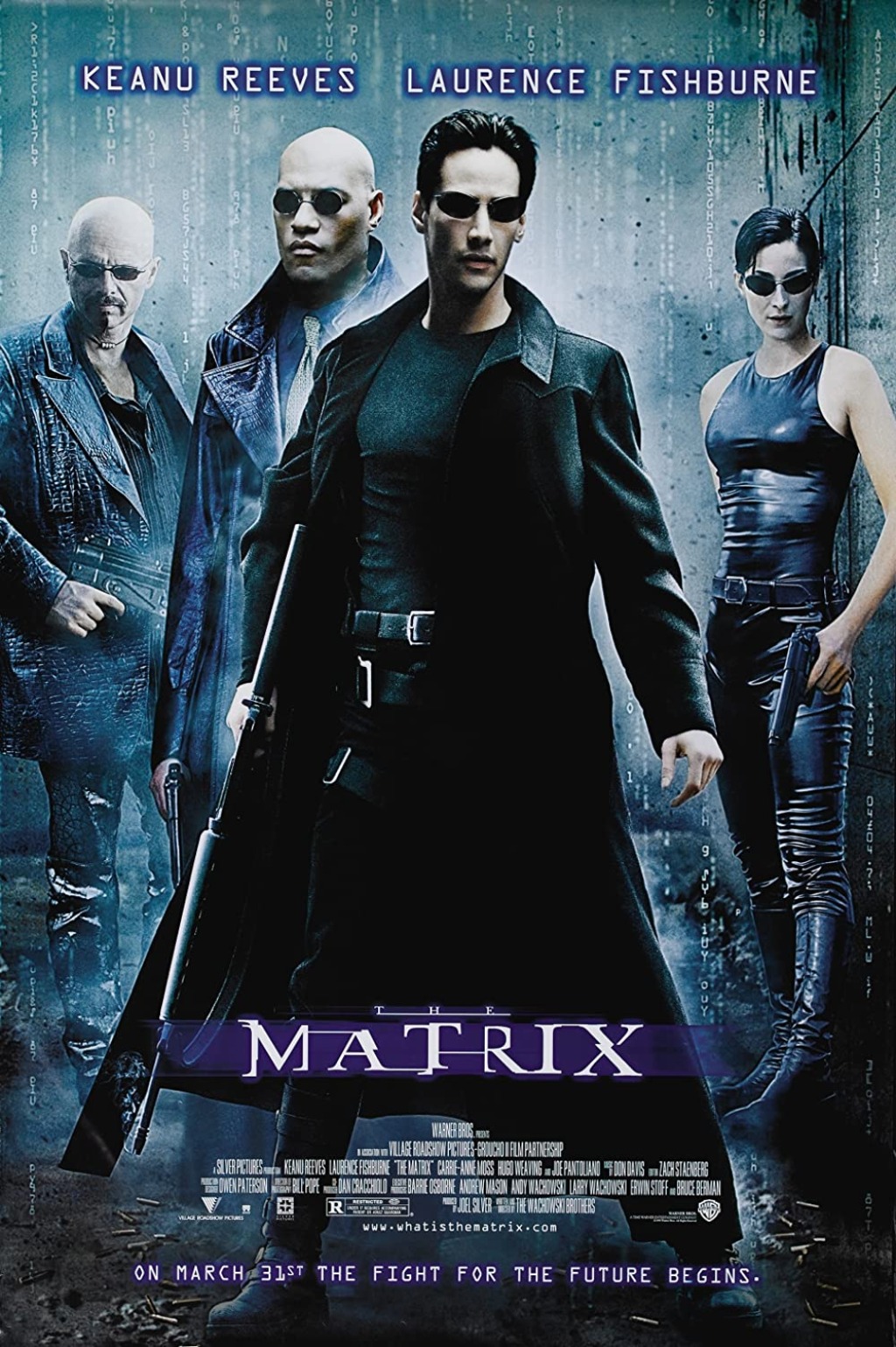Is there anything better than grabbing a bowl of popcorn, leaning back on a comfy couch, and enjoying a great movie or TV show? The best part is that as a writer, in addition to being entertained, you can learn a lot about how to tell a good story from your favorite shows and movies.
I’ve already written several blog posts about movies and TV shows that will teach you how to improve your storytelling, as well as special installments on holiday and fairy tale movies. In honor of our worldbuilding short fiction contest, I’ve decided to focus specifically on movies that do a fantastic job with worldbuilding. Since the contest calls only for speculative fiction submissions (fantasy, science fiction, horror, etc.), I am only including movies that fall under the speculative umbrella. Hopefully, these movies will inspire you as you create your own unique world for the contest.
Here are three movies that you can study to improve your worldbuilding.

Blade Runner: The Final Cut
Where to watch it: Netflix
Ever since its release in 1982, science fiction lovers have revered director Ridley Scott for the dystopian version of LA he painted in Blade Runner. Based on the 1968 novel Do Androids Dream of Electric Sheep? by sci-fi master Philip K. Dick, the story follows Rick Deckard as he hunts a group of rogue androids.
The film begins with scrolling text that explains what Replicants are: robots that are so evolved that they are virtually identical to humans (apart from their superior strength and agility). This small bit of text is brilliantly concise—in just a few short paragraphs it introduces the Tyrell Corporation, who created the Replicants, and how the Replicants were used for hazardous slave labor Off-world. It also chronicles the rebellion of Replicants that made them illegal on Earth and introduced special police squads that hunt rogue Replicants. The last lines of the text—“This was not called execution. It was called retirement”—show so well how these police view the Replicants. This text presented in the first few minutes of the film is something to study if you are looking for a concise way to introduce complex exposition.

Next, we are told that it is Los Angeles in November 2019. Then we see gas flares and the lights of the city, with spaceships flying overhead. Immediately we are presented with a polluted city and futuristic spaceships, setting the scene for the movie’s gritty setting. The fires and lights are reflected in a single blue eye. The scene shifts to a startlingly dim office after the lights and fires of the city, which turns out to be in a large, futuristic building. The seats in the office read “Tyrell Corp”, which shows you right away that this building belongs to them. After a mysterious test goes wrong in the office, we hear an ad for the Off-world colonies, and we find Rick Deckard buying street food in an area clearly influenced greatly by Asian culture.
In just the first ten minutes of this film, the collision of gritty reality and brightly lit, futuristic fantasy clash against one another, as it will continue to do for the rest of the film. You can learn more than just sci-fi worldbuilding from Blade Runner—the little worldbuilding touches in this film can apply to any genre.

The Matrix
Where to watch it: HBOMax
Whenever anyone mentions The Matrix, a certain aesthetic immediately comes to mind—the long black trench coats made of shiny material and sharp sunglasses. This film shows how important what your characters wear is to building your world. It also, like Blade Runner, quickly steeps viewers into its distinctive world.
The first thing we see in the movie is rows of green, unintelligible letters drifting down the screen. Right away these strange letters inspire curiosity. Then we both hear a phone call and see green letters (now in English) type across the screen—this time horizontally rather than vertically. As Cypher and Trinity converse about watching someone, rows of numbers appear on the screen, drifting downward like before. Cypher and Trinity discuss the mysterious man they’re watching, who Morpheus believes is “the one”. New numbers are typed on the screen, and we drift into a zero through a green tunnel and appear on the other side where a cop holds a gun and a flashlight.

Cops sneak through an abandoned building, where they apprehend Trinity who wears a shiny black jacket and matching pants. Down on the street, a few nearly identical men wearing suits and sunglasses arrive. Upstairs Trinity fends off the cops using impossible-looking martial arts techniques. Then she calls Morpheus, who instructs her to find a payphone. After an exciting rooftop chase—during which both Trinity and one of the agents make a seemingly impossible jump—she enters a payphone where the phone is ringing, answers, and vanishes.
So many interesting facets of this movie’s world are introduced with very little exposition. Trinity, Cypher, and Morpheus are all watching someone who Morpheus believes has special significance (while Trinity and Cypher have their doubts). Trinity and the others are in some sort of war with the besuited agents, and the agents outrank the police. Trinity and the agents both also have seemingly supernatural gifts when it comes to combat, speed, and agility. And in the midst of it all is the mystery of these green numbers and letters, and what they might mean. The Matrix does an excellent job of building a world through dialogue and action, and also hits that perfect balance between giving viewers enough of a sense of what’s going on while leaving plenty of mystery.

Inception
Where to watch it: Netflix
With its intriguing premise and ambiguous ending, Inception was likely the most talked about film of 2010. It takes place in a distant future where military technology enables one to infiltrate people’s dreams and extract information. In the film, Cobb is a troubled extractor who takes on one last seemingly impossible job—leading a team to implant an idea in their target’s subconscious. The movie takes place largely in the dream world where worldbuilding possibilities are literally endless. But writer/director Christopher Nolan firmly grounds his dream world with rules, which allows it to have real stakes.
Inception begins with a view of waves crashing, and Cobb washing up on the shore. He can see two young children playing together. A Japanese guard with a gun finds Cobb and sees that he has a gun of his own. In an opulent dining room, the guard tells an older man whose face we cannot see that Cobb was delirious but asked for the man by name, and carried only a gun and a spinning top. Cobb is brought in and fed, and the old man asks if Cobb is there to kill him. With a clear shot of his wedding ring, Cobb says nothing. As he spins it, the old man says he knows what the top is and that he has seen one before many years ago—it belonged to a man he met in a half-remembered dream. Meanwhile, the top spins endlessly on the table without falling.

Suddenly we are still in the same dining room, but Cobb is cleaned up in a suit and the old man—Saito— is young. Cobb and his partner Arthur are trying to convince Saito to hire them as security to protect the secrets in his mind from extractors. But it turns out that they are all in a dream, and Cobb and Arthur are attempting to steal from Saito. In an apartment building with rioting going on outside, Nash checks on Cobb, Saito, and Arthur’s sleeping bodies. Back at Saito’s mansion, Cobb sees Mal, a beautiful young woman, and tells her he can’t trust her. Mal asks if the children miss her.
When Cobb later steals the envelope from a safe, Mal arrives with Saito, pointing a gun at him. Saito reveals he knows that he’s asleep and demands the name of their employer. Mal shoots Arthur in the leg, since killing him would just wake him up but pain is in the mind. Cobb kills Arthur and as the dream is collapsing, Arthur wakes up and manipulates a device hooked up to Saito. Nash pushes Cobb’s chair back into a tub full of water to wake him. Saito wakes as well and Cobb says Saito held information back and asks why. Saito says this was all an audition, but they failed. As the rioters outside get closer, we see Nash, Arthur, and Cobb sleeping on a train, where a boy puts headphones on Nash’s head and a French song plays. Back in the dream, Saito realizes a rug in his apartment is made of the wrong material and finds that he’s still dreaming.
This dream sequence counts for the first fifteen minutes of the film and introduces many facets of its world beautifully. The spinning top is an immediately intriguing object—what sort of top spins and spins but doesn’t fall? With Cobb and Arthur’s pitch to Mr. Saito, we learn about extraction and how it works (or at least, enough about how it works to believe it’s possible within the story). We also learn that Cobb’s lover or wife is showing up in dreams and foiling his plans. You can see that this premise allowed Nolan to unleash his imagination, but rules help to keep the story grounded. Inception is a good example of a film where you don’t need to get into the nitty-gritty of how everything works—you just need to explain enough that the story can move forward.
Hopefully watching these movies will give you all some inspiration for our worldbuilding contest. Remember that submissions are due Friday, August 5, 2022, 11:59 PM EST!
Follow us on Facebook | Instagram | Twitter | Discord